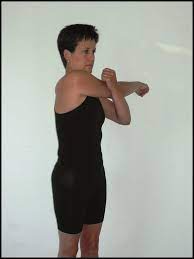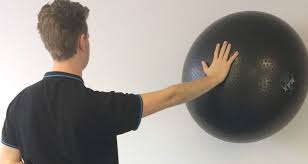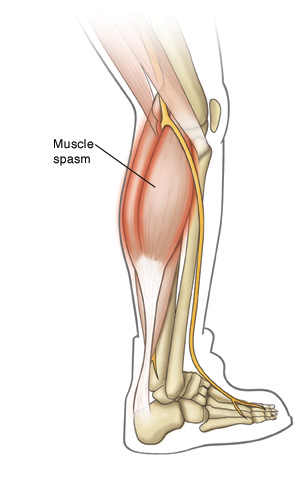Trapezius muscle strain
Table of Contents
What is a Trapezius Muscle Strain?
- Trapezius Muscle strain, also called a pulled muscle, is a word used to describe a partial or complete strain of a muscle.
- Muscle strains are when there’s so major force on your muscle that the tissues tear.
- It’s defined as a muscle strain of the upper back and is a stretching or tearing of the trapezius, which is one of the major muscles of the back responsible for moving, rotating, and stabilizing the shoulder blade and extending the head at the neck region.
- This big muscle group spans the upper back, shoulders, and neck. These muscles are generally called the “ trap” muscles.
- An acute muscle sprain occurs suddenly when the muscle happening trauma, such as a hard fall or car bump. When there is a hard blow to the trapezius, there may be damage as well as other muscle strain symptoms. Pain and stiffness from an acute sprain will be felt instantly.
Where is the trapezius muscle located?
- The trapezius muscle is a large superficial back muscle that parallels a trapezoid shape.
- The trapezius is a superficial, broad, and flat muscle extending from the cervical to thoracic region on the posterior aspect of the trunk and neck. The human trapezius muscle has an origin that is larger than that of any other body muscle.
- The muscle is divided into three parts: superior, inferior, and middle. The muscle promotes scapulohumeral rhythm through attachments on the clavicle and scapula, and head balance through muscular control of the cervical spine.

- Origin
- Superior fibers medial one-third of the superior nuchal line, external occipital protuberance
- Middle fibers nuchal ligament fixed to the spinous processes of C1-C6 vertebral columns, spinous processes, and supraspinous ligaments of vertebrae C7-T3
- Inferior fibers spinous processes and supraspinous ligaments of vertebral columns T4-T12
- Insertion
- Superior fibers posterior border of the lateral one-third of the clavicle
- Middle fibers medium acromion process periphery, the superior crest of the spine of the scapula
- Inferior fibers lateral apex of the medium end of scapular chine-
- Nerve
- Accessory nerve ( motor)
- Cervical spinal nerves C3 and C4 ( sensory and motor)
- Actions
- Scapular retraction, rotation, elevation, and depression
- Antagonist
- Pectoralis major, Latissimus dorsi, and Serratus anterior muscle,
Classification of trapezius muscle strain
- If you strain your trapezius muscle, the pain may be mild or extensive, depending on how severely you’re injured.
- There are three grades of muscle strains
- Grade I strain. This is the mild muscle strain, with only a few fibers torn or stretched. Your muscle may be sensitive but you have normal strength in it.
- Grade II strain. In this type of moderate muscle strain, other fibers are damaged and the ache and tenderness are more severe. A grade II strain generally brings on swelling, loss of strength, and sometimes bruising.
- Grade III strain. This is severe muscle strain You may feel a popping sensation as the muscle rips in two or tears away from its tendon. This is a severe injury that causes a complete loss of muscle function.
Causes of trapezius muscle strain
- An acute trapezius muscle strain is one time your muscle tears quickly and suddenly. muscle tears will be due either to damage or trauma. this will respond to
- Not warming up right before physical activity
- Poor flexibility
- Poor exercise
- Overexertion and fatigue
- Weakness
- Trapezius strains are generally caused by overuse. These muscles are also generally injured during weightlifting or contact sports.
- An acute injury happens suddenly. This is due to trauma from something like a hard fall or an accident. It can also come with weight lifting or connection sports. You’ll feel pain and tenderness immediately. You may also have damage or other symptoms.
Signs and symptoms
rely on the open intensity of the injury.
- In delicate trapezius muscle strain could feel slightly stiff, however still versatile enough to be used.
- Unexpected pain in the upper back, neck
- Trapezius muscle pain with tenderness
- Snapping or popping sensation in your trapezius muscle
- Swelling and bruising in your trapezius muscle
- Limited movement of the trapezius muscle
- Trapezius muscle spasms
- Muscle weakness
- Muscle stiffness
How Is a Trapezius Muscle Strain Diagnosed?
- Your doctor will probably be capable to tell if you have a pulled trapezius muscle based on your symptoms, your medical history, and a physical exam. However, your doctor may be capable to see where the muscle has ripped fully apart If you have a grade III strain. You may take an X-ray to rule out a fracture, dislocation, or another type of damage.
Assessment
Subjective assessment
- History with associated symptoms
- Mechanism of injury
- Inciting trauma-direction and extent of injury force
- Repetitious trauma- defective postural related injuries
Observation
- Strain injuries of the trapezius may present with an obvious deformity similar to a bulge or defect in the muscle belly.
- Tenderness
- Swelling
The upper trapezius is frequently included in neck injuries.
- The upper trapezius has a clear pain referral pattern to the head, so examine it when assessing for Cervicogenic headache.
- Postural issues eg Upper-Crossed Syndrome
- Tearing or straining the trapezius is uncommon, and usually only occurs in bodybuilders lifting too heavy a weight. In high rate movement accidents, it also can be damaged, eg car crashes.
Palpation
Trapezius muscle is superficial muscle and all three-part can be palpated.
- Hold the tilt superior lateral part between fingers and thumb and palpate from origin, close to the clavicle/acromion, and its insertion.With patient standing position: shoulder abducts to 90 degrees and retracts shoulder girdle. Slightly bend the trunk ahead so anty-gravity
Upper Traps:
- Palpate the upper trapezius in a sitting or standing position and check for tension. communally, relax this muscle, so working of the upper trapezius will indicate tightness. Eg. forward head posture. then position the patients supine and compare the amount of upper trapezius tension.if there is tone issue tension is determined
- One by one, you can compare slumped sitting with an upright posture (i.e shoulders back). If the upper trapezius relaxes in the vertical position, this again indicates a tone issue related to posture.
- The upper trapezius is frequently connected to neck injuries
Length Tension Testing
- Patient Positioned supine lying with the arms relaxing by the side and the knees flexed.
- The therapist Standing at the head side of the bed.
- Action The therapist supports the backside(posterior aspect) of the head with both hands and then passively flexes the craniovertebral joint. The right hand stabilizes the lateral one-third of the patient’s right clavicle and acromion feeling the muscle.
- The therapist then gently and slowly flexes, the left side flexes and the right rotates the medial and lower cervical spine with the left hand.
- The hand stabilizes and the hand moves the body part to sense the tension in the muscle. The amount of range and the end feeling is assessed and the reproduction of any symptoms is noted.
- This test is also repeated on the contralateral side and compared.
Treatment
FOR immediate
- Nonsurgical, Conservative treatment maximum muscle strains do not demand surgery if the muscle is fully damaged doctors suggest surgery If there is a partial gash also the athlete can replace when they are effortless and have normal strength and movement.
- This generally occurs following anywhere from many weeks to many months of significant treatment and therapy. When the muscle is fully damaged, the athlete may advantage from surgical repair.
- Some therapists suggest avoiding inimical pain medicines that can extend your threat of bleeding — similar to over the-counter (OTC) medicine (naproxen sodium (Aleve) aspirin and ibuprofen (Advil, Motrin IB), — during the first 48 hours after a muscle strain. Acetaminophen (Tylenol) and others can be helpful for pain relief during this period.
- A Physiotherapist can help you to increase the strength and stability of the injured joint or limb. your doctor may suggest that you stabilize the area with a brace or splint. For some muscle injuries, some muscle sprint surgery may be called.
the R.I.C.E approach
- Rest. Avoid activities that cause pain, swelling, or discomfort. don’t avoid all physical activity.
- Ice. Though you are seeking medical facilities,-ice the world right away. Use an associate degree ice pack or slush tub of ice and water for15 to 20 minutes every time occasion anytime and repeat every 2 to 3 hours. In contrast, you are awake for the primary few days once the injury.
- Compression. To assist stop swelling, compress the world with an associate degree bandage till the swelling stops. do not wrap it too tightly otherwise, you might hinder circulation. Begin wrapping at the top farthest from your heart.
- Loosen the wrap if the pain increases, space the world the realm becomes numb or swelling is going on below the wrapped area.
- Elevation. Elevate the burned space on top of your heart’s extent, particularly at midnight, that permits gravity to assist scale back swelling.
Physiotherapy treatment
The aim of activity treatment is:
- Relieve trapezius muscle pain
- Reduce muscle swelling
- Increases trapezius muscle strengths.
- Improve full mobility of the ligament and corresponding joint
- Restore patient’s confidence
- Restore patients’ full functional activity
Phase one
First week after injury
give some electrotype modalities
- Ultrasound
- Ultrasound is used for tissue healing.
- Increases blood circulation and mobility.
- To reduce swelling and pain
- Cryotherapy (Ice pack)
- Cryotherapy in from of ice packs and cold water baths to the affected area can reduce inflammation and swelling.
- Continuous application of cold several times a day for 15-30 minutes at a time is recommended.
- TENS
- Trans-cutaneous electrical nerve stimulation (TENS) may be able to help reduce pain and muscle spasms.
- IFT (Interferential therapy)
- Pain relief
- Muscle stimulation
- Increased local blood flow
- Reduction of edema
Phase two

After pain relive
- Electrotherapy
- Active exercise for a few days:
- Upward rotation ,
- Scapular retraction,
- Shoulder elevation
- Shoulder depreciation
- External rotation
- Scapular protraction
- Shoulder squeeze



- Stretching exercise: after one to two week
- Upper trapezius stretch
- Middle trapezius stretch
- Lower trapezius stretch
Phase three
After 3 to 12 week
- Strengthening exercise
- Shoulder blade squeeze:
Sit or stand up high with good posture.
Keep your shoulders relaxed and down,
slowly squeeze your shoulder blades together and hold for 3 seconds. then relax.
Repeat 10 to 12 times.
for progression do this exercise with theraband

- External Rotation
Attach theraband to a fixed object at waist level
Rotate shoulders back and down and maintain this position
Place towel between elbow and side
Slowly rotate the hand down from the abdomen
Hold 3 sec. Repeat 12-15 times

- Prone rowing exercise
lie prone on your bed with the arm hanging freely off of the side.
While holding on the shoulder blade ‘set’,
raise the arm against the floor while bending at the elbow.
The elbow should be raised and the side of the body until the hands touch the lower ribs.
Always return slowly to the start position.
Perform 2 sets of 10-15 repetition

- Angel Wings
Stand with your head, shoulders, upper back, and butt pressed close up to the wall. Your feet may need to be 10 – 12 inches from the wall.
Keeping your knees slightly bent will reduce muscle pressure.
With the reverses of your hands against the wall, stretch your arms straight above your head. you’re in the starting position.
Squeeze your mid-back muscles as you slide your arms down close to your shoulders. Keep your body firmly pressed close to the wall.
When elbows are just below shoulders, pause for just a sec, also slide your arms back to the starting position.
Do 10 – 20 repetitions

- Shoulder Diagonals
The patient stands with theraband lower their opposite foot
While grasping theraband, move shoulders up and down
With your hand at your opposite hip, slowly raise it beyond
your body, as if you’re pulling a blade
Hold 3 seconds and repeat 10-15 times
- Lateral Raises
Stand with the arm at your side with the elbow straight and the hands twisted so that the thumb’s face is ahead.
put up the arm straight out to the side, palm downward, until the hands reach shoulder position.
Do not put up the hands forward than the shoulder. Pause and slowly down the arm.
Perform 3 sets of 10-15 repetitions. for progression do this exercise with dumbbell
- Upright row
This is a common exercise for strengthening the trapezius. You can also try this exercise with dumbbells or a therabend in your hands.
Stand up straight.
With your fists held, pull up your fists as high as you can while bending your elbows, keeping your hands close to the front of your body.Hold for a count of ten.
Release your arms back into a relaxed position, fists still hold
Reprise 20 times.

- Physio ball Scapular Exercises
Stand with hand placed on physio ball beside a wall
Bring shoulders up and down
Slowly rotate your hand up and down over the ball
Maintain shoulders up and down. repeat 15 to20 times

- Horizontal Rows
Attach theraband around a stable object, like a pole
The patient can either kneel or stand,
Grasp both ends of the theraband, Bring shoulders up and down
Slowly pull your elbows up, squeezing your shoulder blades together
Hold 3 seconds and repeat 10-15 time
- Wall Push-ups
Stand facing a wall.
Place your hands on a wall, slightly wider than shoulder-width apart.
Gently band your body to the wall while squeezing your shoulder blades together, repeat 10-15 time
- Push up
lying face down on the floor, positioning your hands slightly wider than your shoulders.
Don’t lock out the elbows; keep them slightly bent.
your legs should be straight back and balanced by your hands and toes.raise your body off the floor and back to starting position,
10-12 time
Preventive measures
- DO the proper warm-up before some exercises or sporting activity.
- Stretch after exercising or playing sports
- Avoid immediate intense strength training and build strength gradually
- Do Regular stretching and strengthening exercises for your sports, fitness, or work exertion, as a part of your overall physical activities
- An exercise program can help to minimize your danger of muscle strains.
- Try to be in a shape to play your sport; don’t play your sport to get in shape.
- If you have a physically demanding occupation, regular exercise can help to help injuries.
- Follow a healthy diet and an exercise program to maintain a healthy weight. The overweight can put added pressure on the muscles, making muscle strains again probable to do








One Comment